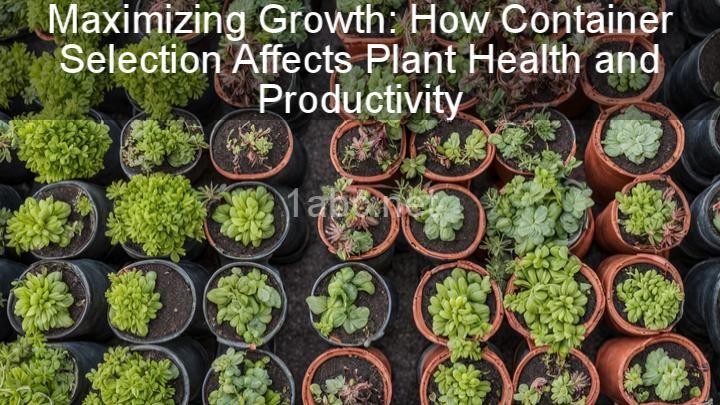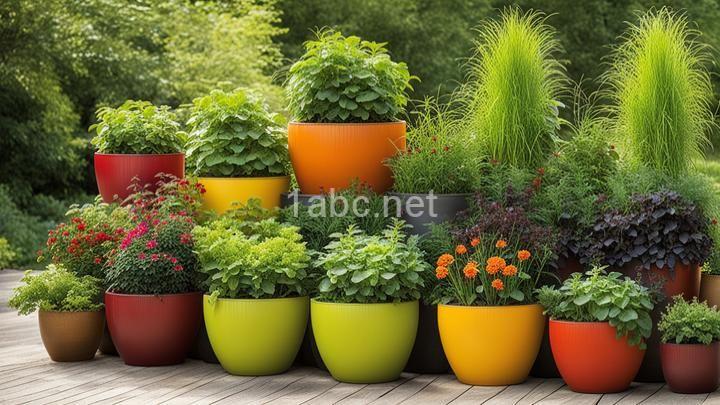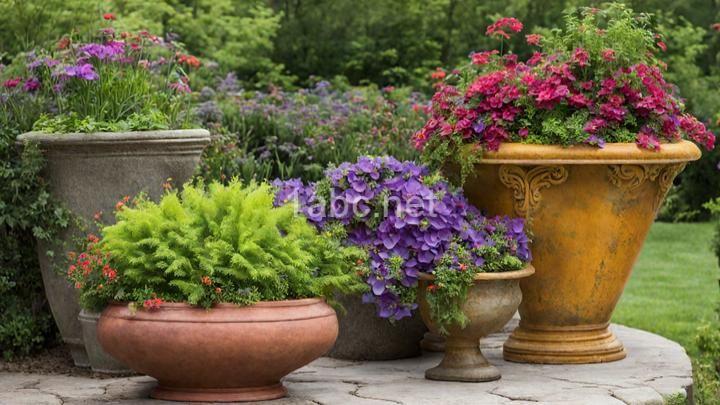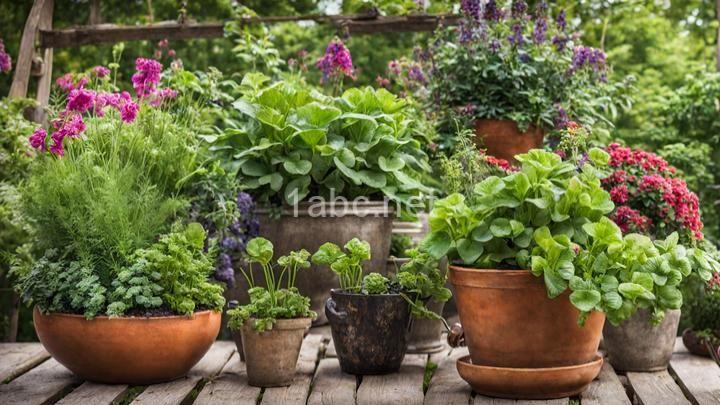Maximizing Growth: How Container Selection Affects Plant Health and Productivity

Introduction:
Welcome, fellow plant enthusiasts! Whether you're an experienced gardener or just starting your green thumb journey, one crucial factor that often goes overlooked is container selection. Yes, that's right - the container in which you choose to house your beloved plants can have a significant impact on their health and productivity. In this blog post, we will explore the fascinating world of container selection and delve into how it influences root development, drainage, aeration, and ultimately, the overall growth of your plants. By the end of this read, you'll be equipped with the knowledge and insight to make informed decisions about the containers you use for your plants. So, let's dive right in!
I. Understanding the Impact of Containers on Plants
A. Explaining how containers influence root development
The size and depth of containers play a crucial role in root development. Plants need adequate space for their roots to grow and spread out, allowing them to absorb essential nutrients and water from the surrounding soil. Choosing containers that are too small can restrict root growth, leading to stunted plants. On the other hand, oversized containers may lead to excessive moisture retention, potentially causing root rot.
Additionally, the material of the container can also affect root development. Different materials, such as plastic, clay, and fabric, have varying impacts on root growth. Plastic containers are lightweight and provide good insulation, but they can retain more heat and moisture, which may be detrimental in certain climates. Clay containers, while heavy, are porous and allow for better airflow, preventing root suffocation. Fabric containers, such as grow bags, promote root aeration and prevent circling roots by allowing them to "air-prune."
B. Addressing drainage and aeration considerations
Proper drainage is vital for plant health. Containers that do not have adequate drainage holes can lead to waterlogging, which deprives roots of oxygen and promotes the growth of harmful bacteria and fungi. It's essential to ensure that excess water can freely flow out of the container.
Aeration is another critical factor in container selection. Healthy roots require oxygen, and containers that lack proper aeration can suffocate the roots, leading to poor growth and root diseases. Containers with insufficient airflow can be particularly problematic in humid environments, where moisture tends to linger.
II. Choosing the Right Containers for Optimal Plant Health
A. Evaluating different container sizes for specific plant types
Different plants have unique space requirements, and choosing the right container size is crucial for their well-being. Small plants, such as herbs or succulents, typically thrive in containers with a capacity of 1-2 gallons. Medium-sized plants, like tomatoes or peppers, generally require containers with a capacity of 3-5 gallons. Larger plants, such as fruit trees or shrubs, need containers with a capacity of 10 gallons or more to accommodate their extensive root systems.
It's important to consider anticipated plant growth when selecting container sizes. If the plant is expected to grow significantly, it's wise to opt for a slightly larger container from the start, rather than having to repot the plant later on, which can cause stress to the roots.
B. Comparing various container materials and their benefits
When it comes to container materials, each has its own set of advantages and considerations. Plastic containers are popular for their affordability, lightweight nature, and durability. They also retain moisture well, making them suitable for plants that require consistent moisture levels. However, in hot climates, plastic containers can become excessively hot, potentially damaging the roots.
Clay containers, while heavier and more prone to breakage, offer excellent breathability for roots. Their porous nature allows for air and moisture exchange, creating a healthier environment for root development. Clay containers are particularly beneficial for plants that prefer well-drained soil and require good ventilation.
Fabric containers, such as grow bags, have gained popularity in recent years. They are lightweight, portable, and provide excellent aeration for roots. Grow bags also prevent root circling by air-pruning the roots, leading to a more robust root system. They are especially suitable for plants that thrive in well-drained soil and require good airflow.
Consider the climate conditions and specific needs of your plants when choosing container materials. Understanding the benefits and drawbacks of each material will help you make an informed decision.
III. Enhancing Productivity through Container Selection Strategies
A. Utilizing specialized containers for improved productivity
Container selection can go beyond just providing a suitable home for your plants; it can also enhance productivity. Self-watering containers, for example, offer a convenient solution for maintaining optimal moisture levels. These containers have a water reservoir at the bottom, allowing the plants to draw water as needed. This feature is particularly beneficial for busy individuals or those who tend to forget to water their plants regularly.
Vertical gardening solutions also maximize space efficiency. These containers are designed to be stacked or hung, making them ideal for small balconies or limited garden space. Vertical gardening allows you to grow more plants in a smaller area, increasing your overall productivity.
B. Implementing proper maintenance techniques
Container maintenance is crucial for the health and productivity of your plants. Regular cleaning and sanitizing of containers prevent the transmission of diseases and pests. It's recommended to wash containers with a mild bleach solution and rinse them thoroughly before reusing them. Additionally, removing any dead plant material from the containers will help prevent the buildup of harmful pathogens.
Monitoring the health of your plants is essential. Keep an eye out for signs of stress or nutrient deficiencies, such as yellowing leaves or stunted growth. Adjusting watering and fertilization practices accordingly will ensure that your plants remain healthy and productive.
Conclusion:
Congratulations on making it to the end of this extensive blog post! We hope you found the information provided useful and enlightening. Remember, container selection is not just about aesthetics; it plays a significant role in the growth and productivity of your plants. By understanding how containers influence root development, drainage, and aeration, you can make informed decisions that will benefit your plants in the long run.
Consider the specific needs of your plants when choosing container sizes and materials. Whether you opt for plastic, clay, or fabric, each material has its benefits and considerations. Additionally, don't be afraid to explore specialized containers, such as self-watering or vertical gardening solutions, to maximize productivity.
As you embark on your container selection journey, we invite you to share your experiences, tips, or questions in the comments section below. Let's continue learning and growing together!
FREQUENTLY ASKED QUESTIONS
What is the importance of container selection for plant growth?
Container selection is crucial for plant growth because it directly impacts the well-being and development of the plant. Here are a few reasons why container selection is important:
- Proper Drainage: Selecting a container with adequate drainage holes is essential for preventing waterlogging and root rot. Excess water that cannot escape the container can drown the roots and impair the plant's growth.
- Root Space: Plants need sufficient room for their roots to grow and expand. Choosing a container that is appropriately sized for the plant allows for healthy root development. Too small of a container can restrict root growth and negatively affect the overall health of the plant.
- Air Circulation: Proper air circulation is vital for preventing fungal diseases and promoting healthy plant growth. Selecting a container with appropriate ventilation can help prevent stagnant air around the roots and improve plant respiration.
- Material Selection: Different container materials, such as plastic, clay, or fabric pots, have varying properties, such as water retention and insulation. Understanding the specific needs of the plant and its growing conditions can help determine the most suitable container material.
- Aesthetic Considerations: While not directly related to plant growth, the aesthetics of the container can greatly enhance the overall appeal of the plant. Choosing an attractive container can elevate the visual impact of the plant and its surrounding environment.
In summary, the selection of an appropriate container is crucial for creating an optimal growing environment for plants. It ensures proper drainage, sufficient root space, adequate air circulation, and aligns with the specific needs of the plant.
How does the choice of container affect the health of plants?
The choice of container can greatly impact the health of plants. Here are a few ways in which different types of containers can affect plant health:
- Drainage: Proper drainage is crucial for plant health. Containers with drainage holes allow excess water to escape, preventing waterlogging and root rot. Without adequate drainage, plants are more prone to water-related issues.
- Air circulation: Good air circulation is necessary for plant growth and helps prevent fungal diseases. Container materials like terracotta, which allow for better airflow, can promote healthier plant growth compared to non-porous materials.
- Insulation: Different container materials have varying levels of insulation. For instance, plastic containers provide better insulation against extreme temperatures, protecting roots from heat or cold stress. This insulation can have a positive impact on plant health in regions with harsh weather conditions.
- Root growth: The size and shape of containers influence root development. Deep containers encourage downward root growth, promoting a stronger root system. Containers that are too small can restrict root growth, leading to stunted plants with limited access to nutrients and water.
- Moisture retention: Porous containers, such as clay or terracotta, allow moisture to evaporate more quickly. This can be beneficial for moisture-sensitive plants that may suffer from overwatering. Non-porous containers, on the other hand, can help retain moisture for plants that require more consistent hydration.
- pH and chemical interactions: Certain container materials, like metal or untreated wood, can interact with the soil, altering its pH and nutrient content. This can directly impact plant health and may require additional measures to maintain the ideal soil conditions.
Overall, choosing the right container type and size for your plants is essential for their overall health and well-being.
Can the wrong choice of container negatively impact plant productivity?
Yes, the wrong choice of container can negatively impact plant productivity. The choice of container affects various factors such as root development, water drainage, air circulation, and nutrient availability. If the container is too small, it can restrict root growth and cause the plant to become root-bound, leading to stunted growth and reduced productivity. On the other hand, if the container is too large, it can lead to overwatering and poor drainage, which can cause root rot and hinder plant growth. Additionally, the type of material used for the container can influence the temperature of the soil, which can further impact plant growth. Therefore, it is important to choose the appropriate container size and material for the specific plant to ensure optimal productivity.
What are the different types of containers available for growing plants?
There are several different types of containers available for growing plants. Some popular options include:
- Plastic pots: These are lightweight, affordable, and come in various sizes and shapes. They provide good drainage but may require more frequent watering.
- Terracotta pots: These are made from clay and have a natural, rustic appeal. They are porous and allow the soil to dry out more quickly, which can be advantageous for some plants.
- Fabric pots: These are made from breathable fabric that promotes better aeration and prevents root circling. They are lightweight, portable, and promote healthier root growth.
- Hanging baskets: These are perfect for trailing plants or creating vertical gardens. They come in various materials such as plastic, metal, or woven materials.
- Grow bags: These are made from thick fabric or plastic and are popular for growing vegetables. They provide good drainage and can be easily moved around.
- Window boxes: These are typically used for growing plants on windowsills or balconies. They come in various materials like wood, plastic, or metal and add a decorative element to your space.
- Raised beds: These are larger containers with built-in edges that are ideal for growing veggies or large plants. They provide better soil drainage, separation from other plants, and ease of access for gardening tasks.
Remember, the choice of container depends on the type of plant, available space, and the specific needs of the plant regarding watering, drainage, and root growth.


